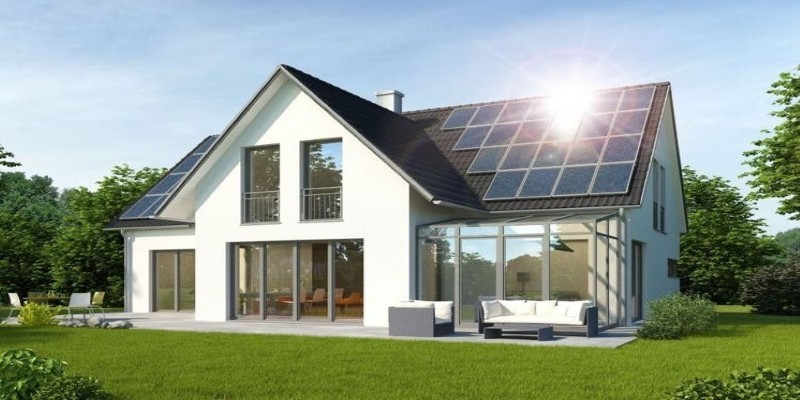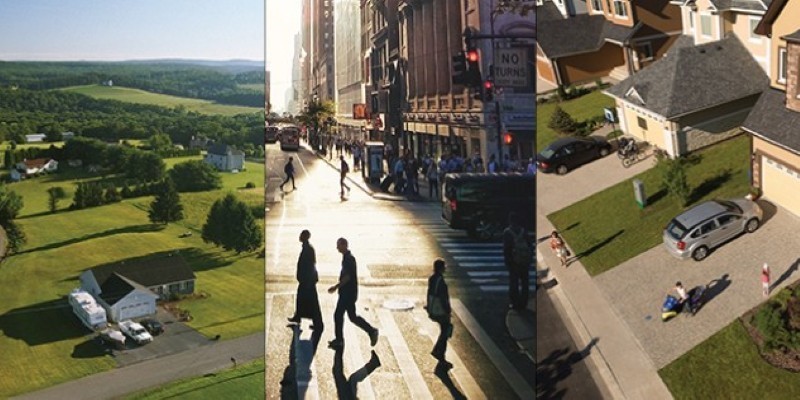As the real estate market continues to evolve, home buyers in 2025 will face a landscape vastly different from just a few years ago. Shifting economic factors, technological advancements, and changing societal expectations influence people's approach to home buying. Whether you're a first-time buyer or a seasoned investor, staying informed about these trends is essential to make the best decisions.
The digital transformation in the real estate sector has been accelerating, and in 2025, it will have entirely reshaped how homes are bought and sold. Virtual tours, augmented reality (AR) walkthroughs, and 3D visualizations are now standard in home-buying. Buyers can explore properties from the comfort of their homes, allowing them to shortlist properties more effectively without needing in-person visits. This shift has been driven by advancements in AR and VR technologies, which provide a more immersive and interactive experience than ever before.
Online platforms also play a critical role in home buying. Tools like automated mortgage calculators, AI-driven property recommendations, and instant communication with real estate agents speed up and make the entire process more convenient. These innovations empower buyers to make more informed decisions by giving them instant access to data, trends, and market insights.
The demand for digital-first experiences isn't just about convenience—it's also a response to changes in lifestyle. In 2025, more people will be working remotely, and the preference for virtual solutions reflects this shift. Remote work means homebuyers have more flexibility regarding location and are increasingly willing to purchase homes without physically visiting them, especially in places far from their current cities or states.
One of the most significant trends in home buying in 2025 is the increased focus on sustainability and energy efficiency. Climate change concerns and rising energy costs prompt buyers to prioritize homes with long-term cost savings and a lower environmental impact. Homebuyers seek properties that provide environmental benefits and financial incentives, from energy-efficient appliances to solar panels and high-performance insulation.

Many new home buyers opt for homes with green certifications like LEED (Leadership in Energy and Environmental Design) or those built to the standards of passive house construction. These homes are designed to minimize energy consumption, reduce carbon footprints, and maximize resource efficiency, which resonates with buyers who want to impact the planet positively.
In 2025, many homebuyers are looking for properties that can accommodate multiple generations under one roof. This trend towards multi-generational living is partly due to economic pressures, as adult children move back home due to high housing costs or caregiving responsibilities for ageing parents. Flexible spaces for home offices, in-law suites, or independent living units are highly desirable.

Homebuilders are responding by offering floor plans that cater to this need, with separate entrances, more privacy, and adaptable rooms that can be customized based on the buyer's needs. These homes may feature additional bathrooms, kitchens, or even tiny apartments within the home, providing ample living space for everyone while maintaining some level of independence.
The desire for flexibility in housing extends beyond multi-generational living to include adaptable spaces for remote work. As remote and hybrid work models remain popular, homebuyers want properties that provide dedicated areas for working from home. Home offices or flexible rooms that can easily be converted into an office are now considered essential, not optional.
With the rise of remote work and a growing desire for more space, there has been a noticeable shift in home buying trends towards suburban and rural areas. In 2025, homebuyers increasingly prioritize indoor and outdoor space over proximity to urban centres. While city living may still appeal to some, many buyers seek homes in quieter, less crowded environments to enjoy more significant properties at a more affordable price point.

Suburban areas, often within commuting distance of major cities, offer a balance of convenience and space. Rural areas, while more remote, offer even larger properties, often with access to nature and a slower pace of life. This trend has been amplified by the ongoing availability of remote work, which allows people to live farther from traditional business hubs. The ongoing expansion of high-speed internet infrastructure also means that rural areas are no longer as disconnected as they once were, making them more attractive to homebuyers.
The increasing popularity of suburban and rural areas is also reflected in the design of new homes. Builders focus more on outdoor living spaces, larger yards, and features promoting an active, nature-connected lifestyle. This preference shift will continue as more buyers value tranquillity, space, and privacy.
Affordability remains a key issue in the housing market, and homebuyers in 2025 are more cautious about price points than in previous years. While home prices in many areas have risen in the past decade, buyers seek ways to stretch their budgets. As a result, government programs and incentives play a more significant role in making homeownership accessible.

In 2025, various government initiatives are aimed at making homeownership more attainable. These may include down payment assistance programs, tax credits, or other financial incentives for first-time buyers or those purchasing eco-friendly homes. Some states and municipalities also offer programs designed to revitalize specific neighbourhoods, incentivizing buyers to invest in areas needing development.
The financial landscape of 2025 also sees an increased role of mortgage lenders and financial institutions offering tailored loan products. From low-interest loans to special programs for buyers with unique circumstances, these options provide more pathways to homeownership. However, homebuyers must remain mindful of rising interest rates in some markets and adjust their expectations and budgets accordingly.
Financing is becoming more efficient and less bureaucratic, thanks to new technologies. Digital mortgage lenders and financial platforms are streamlining the mortgage application process, allowing buyers to submit all necessary documentation, obtain pre-approval, and complete most of the process online. This ease of access and efficiency is highly appealing to buyers in 2025, who are accustomed to online services in nearly every aspect of their lives.

Furthermore, the rise of AI in the financial sector has enabled more personalized mortgage offerings. AI-driven platforms can now analyze buyer's financial profiles and offer them the best loan products based on their unique needs, improving the likelihood of securing favourable terms. This technology makes it easier for buyers to compare loan options, monitor interest rates, and manage their home financing throughout the buying process.
The trends in home buying in 2025 reflect the continuing evolution of the real estate market, influenced by economic factors, technological advancements, and shifting societal priorities. From digital-first experiences to focusing on sustainability and flexible living spaces, these changes reshape how homebuyers approach their purchases. Whether it's the growing preference for suburban living or the need for energy-efficient homes, the key to success in 2025 will be understanding these trends and making informed decisions that align with personal goals and financial realities. As technology and societal norms continue to shift, the home-buying experience will only become more tailored to the needs of today's buyers.